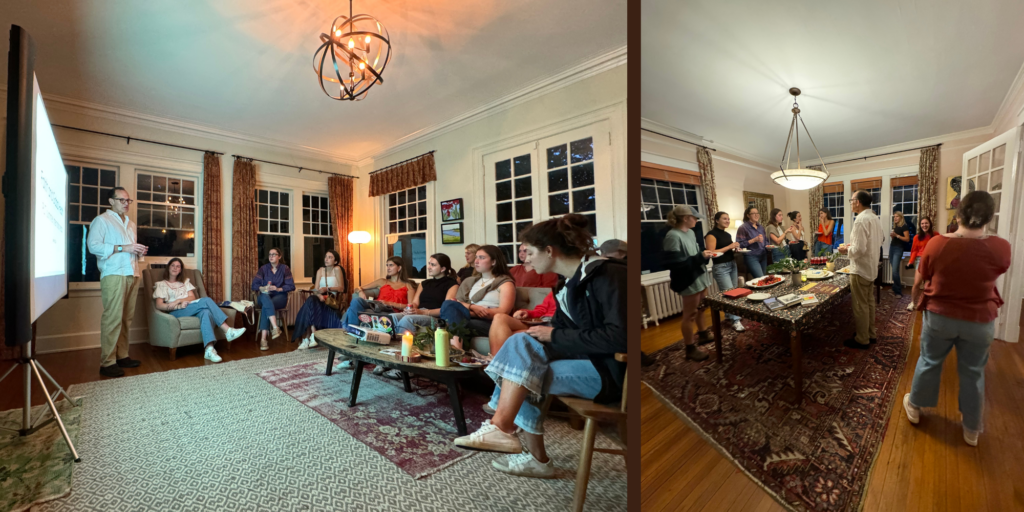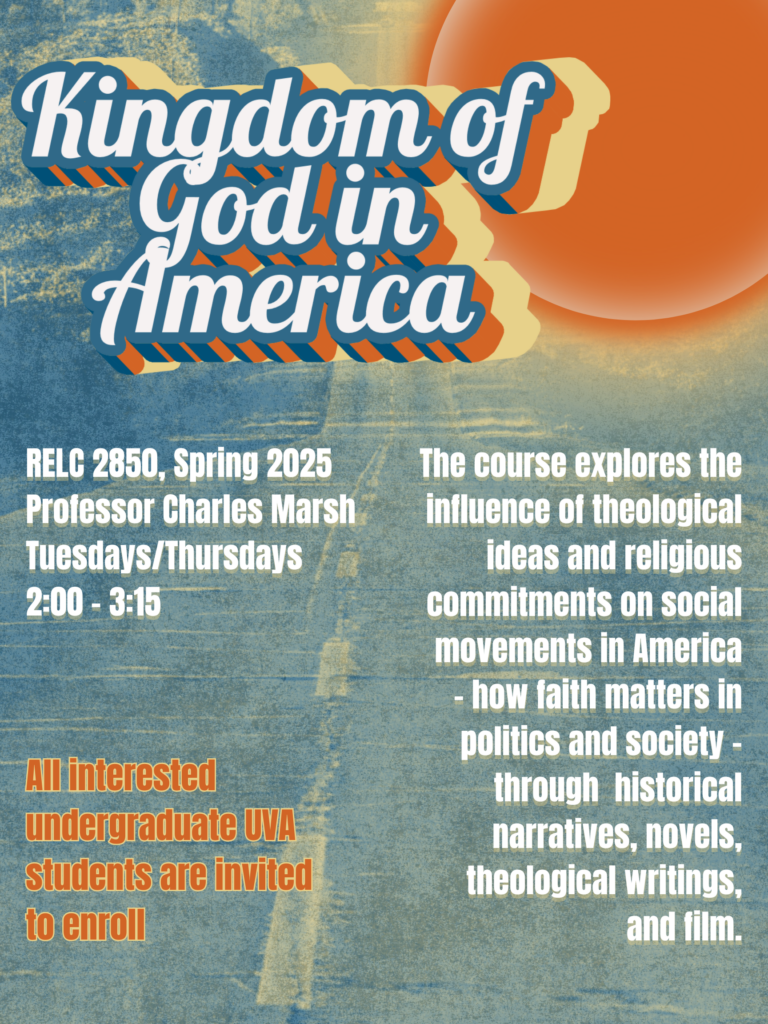On December 3, 2024, Robert P. Jones joined the UVA graduate seminar Theologies of Resistance and Reconciliation by Zoom to talk about his research on the theological and historical sources of white supremacy in the United States.
Dr. Robert P. Jones is the president and founder of the Public Religion Research Institute, a nonprofit nonpartisan organization dedicated to conducting independent research and driving conversations at the intersection of religion, culture, and politics. He is a frequent on-air guest on television shows, and his editorials and essays have been published in such places as The Atlantic, Religion News Services, Time Magazine, and other outlets. He’s frequently featured in major news media, such as CNN, MSNBC, NPR, The New York Times, and the Washington Post.
Dr. Jones is also a New York Times bestselling author. His most recent book is The Hidden Roots of White Supremacy, and the Path to Shared American Future. His book The End of White Christian America won the 2019 Grawemeyer award, which is given every year to the most influential book written in religion in North America, and this is quite an extraordinary honor. His talk today is based on an earlier book called White Too Long: The Legacy of White Supremacy in American Christianity.
The Project on Lived Theology at the University of Virginia is a research initiative, whose mission is to study the social consequences of theological ideas for the sake of a more just and compassionate world.










